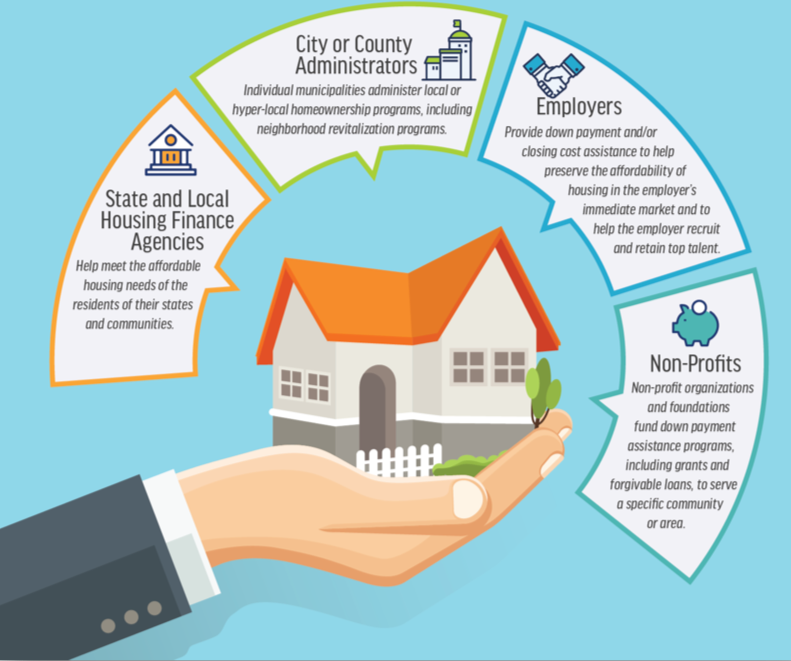The traditional path to homeownership often seems paved with financial obstacles, particularly the formidable barrier of a hefty down payment. In response to this challenge, the United States has witnessed a surge in innovative solutions aimed at making homeownership more accessible to a broader spectrum of aspiring homeowners.
In this article, we delve into the realm of Low Down Payment Financing Programs, exploring the various avenues that empower individuals to turn their homeownership dreams into reality. From government-backed initiatives to offerings from private lenders, we unravel the intricacies of these programs, shedding light on their benefits, eligibility criteria, and the diverse options available to prospective homebuyers.
7 Low Down Payment Financing Programs to Consider
1. Federal Housing Administration (FHA) Loans
FHA loans are government-backed programs designed to assist first-time homebuyers and those with limited financial means. With a low down payment requirement and more flexible qualification criteria, FHA loans make homeownership achievable. Borrowers benefit from competitive interest rates, and the FHA’s backing minimizes risk for lenders, fostering increased accessibility to the housing market. A good thing about FHA loans is that your entire down payment can be covered by a gift from family, an employer, or a down payment assistance provider. With a big enough gift, you could buy a home with no money from your own pocket, and FHA rules allow it.
2. Conventional 97 Loans
Conventional 97 loans are an attractive option for homebuyers seeking a conventional mortgage with a down payment as low as 3%. Offering competitive interest rates, these loans cater to a broader range of buyers. With fewer restrictions compared to other conventional loans, Conventional 97 programs provide a pathway to homeownership for those with modest savings.
3. Department of Veterans Affairs (VA) Loans
Dedicated to serving veterans and active-duty military personnel, VA loans require no down payment, making homeownership more accessible for those who have served our nation. If you’re a current or former military member, check out the VA loan before others. VA home loans are better because they are a subsidized benefit earned from service. The service period required varies from 90 days to six years, depending on your type of service. With favorable terms and reduced closing costs, VA loans honor the sacrifice of service members by providing a financially advantageous path to owning a home.
4. HomeReady Mortgage
HomeReady mortgages, backed by Fannie Mae, target low to moderate-income borrowers. Featuring a down payment as low as 3%, these loans provide flexibility in income sources, allowing non-borrower household members’ income to be considered. HomeReady mortgages promote inclusivity, acknowledging diverse family structures and empowering a wider demographic to enter the housing market.
5. USDA Home Loan
USDA home loans, facilitated by the United States Department of Agriculture, support rural homeownership with no down payment requirements. Tailored for individuals and families in eligible rural areas, these loans offer competitive interest rates and low mortgage insurance costs. While it might sound like a loan for farms or big plots of land, USDA loans are actually for regular homes in rural and suburban areas. To check eligibility, use the USDA property map and enter an address. USDA home loans contribute to sustainable rural development, fostering thriving communities nationwide.
6. Good Neighbor Next Door
The Good Neighbor Next Door program, administered by the Federal Housing Administration, provides significant incentives for teachers, law enforcement officers, firefighters, and emergency medical technicians. Participants can secure homes at a 50% discount from the list price in designated revitalization areas. There are extra requirements, like living in the home for at least three years. Check full requirements on HUD’s website. This program aims to strengthen communities by encouraging professionals vital to their well-being to become homeowners.
7. Freddie Mac HomeOne
Freddie Mac’s HomeOne mortgage program is tailored for first-time homebuyers with a down payment as low as 3%. Offering fixed-rate mortgages, HomeOne provides stability for budget-conscious buyers. The whole down payment can come as a gift, allowing you to become a homeowner with little or no money out of pocket. However, your income must be at or below 80% of your area’s median income. Use Freddie Mac’s eligibility tool to confirm the maximum income in your area. This program contributes to housing market inclusivity, ensuring that even those entering the market for the first time can experience the benefits of homeownership with manageable financial commitments.
6 Benefits of Low Down Payment Financing
call 210-887-2760
today for easy financing on mobile homes. low down payment financing programs.

